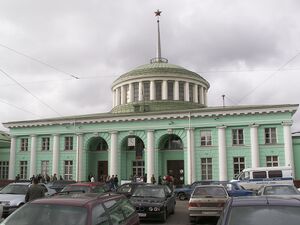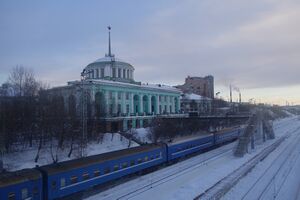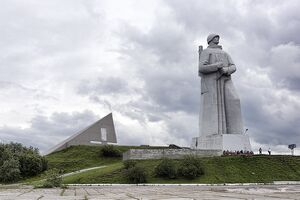Murmansk
| Murmansk | |||||
|---|---|---|---|---|---|
| Japanese Name | ムルマンスク | ||||
| Weapon | |||||
| Race | Human | ||||
| Nationality | |||||
| Birthday | March 9 | ||||
| Constellation | Pisces | ||||
| Talents | Hunting, Invisibility | ||||
| Strengths | Able to genuinely accept anything | ||||
| Weaknesses | Always ends up seeing other people's pets as emergency rations | ||||
| Hobbies | Reading | ||||
I have a [Condition] where I disappear if I don't eat [Meat]. That's why I learned how to use a [Gun] to get the [Meat] I crave.
Layers
| Icon | Title | Release Date | Where to Obtain |
|---|---|---|---|
| [Solitude Outside the Walls] Murmansk | 2021 August 30 (EN) | Premium Gacha | |
| [Disappearing Reader] Murmansk | 2021 November 1 (EN) | [Snow and Ice Neverland] Event Reward | |
| [Meat-Loving Miss Reindeer] Murmansk | 2021 December 15 | [Underworld Ringing Jingle Bells] Limited Gacha | |
| [Hunter in the Snow] Murmansk | 2021 November 1 (EN) | [Snow and Ice Neverland] Pick Up Gacha, Premium Gacha | |
| [Fun Suikawari] Murmansk | 2022 July 23 | [Mist Summer! Princess and Hunter's Vacation] Limited Gacha |
Owned Skills
Trivia
- Murmansk's birthday is the date where the Royal Navy squadron occupied the Soviet harbour of Murmansk by the Arctic Ocean on 1918 during the Finnish Civil War.
- Murmansk's weapon is an M1891 Mosin-Nagant. Many of these rifles were manufactured in the United States, and were purchased by the US Army when Vladimir Lenin cancelled pre-existing contracts w/ American manufacturers. Troops in the landing at Murmansk during the failed American/British 1918 intervention in Russia were armed with the weapon.
- Murmansk's Aurora Syndrome references Murmansk city, which is the largest in the Arctic Circle, and its location is ideal for aurora observations. Originally it was just a cold village, but it developed rapidly in the 1920s.
- Aurora Syndrome is a hereditary disease. People affected with Aurora Syndrome causes their bodies to becomes transparent unless the person regularly ingests raw flesh and body fluids of living organisms (strictly speaking, the "life force" contained in them). There is no cure for Aurora Syndrome, and failure to do so will cause the affected person to vanish permanently from existence. Cooking food removes the required "life force", rendering them useless for survival.
- Murmansk is the last surviving member of her tribe, after the genocide of her people by the Eisengrad populace due to a lack of understanding of the disease, instead misidentified and slaughtered the affected people as monsters before further research was completed. This may be a reference to Murmansk being the last city founded by the Russian Empire.
- Murmansk's literacy is low due to her childhood's living conditions as wandering nomads. In Japanese, some of her words are bracketed and written in hiragana. In Chinese localization these words are bracketed, while this is however not reflected in English. When speaking, her tone is impeded and unnatural on these words.
- Murmansk's people are called "Baba Yaga" during the persecution days. Baba Yaga is a supernatural being in Slavic folklore who appears as a deformed and/or ferocious-looking woman.
Counterpart
Murmansk station (Мурманск станция) is a railway station of the Murmansk region of the Oktyabrskaya railway, located in the city of Murmansk, Murmansk region. The distance from Murmansk station to St. Petersburg is 1450 km. Murmansk is one of two stations located within the city limits (the other station is Komsomolsk-Murmansky). The station is categorized as a passenger freight hybrid station.
Murmansk station is opened on October 12, 1916, after the completion of the Murman Railway connecting Murmansk to Saint Petersburg (the Murman line was renamed the Kirov Railway in 1935 in honor of Sergei Kirov, a prominent Bolshevik leader of the Russian revolution, who had been assassinated the year before). The railway was electrified in 2005.Workers of the the Murmansk station depot of the Kirov Railway manufactured and completed an armored train in October 1941, which was transferred to the 73rd division armored train of the Red Army. Wikipedia
The station has more than 15 tracks, including 4 passenger tracks. Long-distance trains depart from the station to the south of the country and neighboring cities. Since June 21, 2011, suburban communication has been restored to Apatity station. In the case of freight tracks, the freight trains depart between here and the Murmansk commercial sea port, the main shipment is mostly coal, and fuel oil for boiler plants.
The former railway station was built in the pre-war years, it was however burned down during the Eastern Front of World War 2 (known as the Great Patriotic War in Russia). The station is a three-story structure of light green color, crowned by a spire with a five-pointed star, which is still functioning to this day. The project of the new station was carried out by the employees of Lengiprotrans. The building of the station with a dome was built in 1954. In 1959, using a helicopter, a 15-meter spire with a star was installed. In 1962, two buildings were added, in which a waiting room and a restaurant are now located. The station building was modernized for the centennial festival of the "Hero City Murmansk", covered platforms were created for the project, and the station is connected to the shipyard and the bus station. Murmansk is most northern train station in the world, and is the third Arctic railway to be served by double-decker cars. Arctic Today
Murmansk was the last city founded in the Russian Empire. In 1915, World War I needs led to the construction of the railroad from Petrozavodsk to an ice-free location on the Murman Coast in the Russian Arctic, to which Russia's allies shipped military supplies. The terminus became known as the Murman station and soon boasted a port, a naval base, and an adjacent settlement with a population that quickly grew in size and soon surpassed the nearby towns of Alexandrovsk and Kola.
Murmansk was a strategically important sea port and industrial city. It was the only Soviet port on the northern coast that did not freeze in the winter, and was vital for the transport of supplies to the South. German forces, including 800 Finns under German command, launched an offensive against Murmansk on June 29, 1941. More than 180,000 grenades and inflammable shells were fired on the city itself. Fierce Soviet resistance in the tundra and several Soviet counter-attacks made an Axis breakthrough impossible, however. Axis forces discontinued their attacks in late October 1941, having failed to take Murmansk or to cut off the Karelian railway line. Murmansk was awarded the title Hero City in 1985. Wikipedia
Map
Gallery
- Pages using Tabber parser tag
- Pages using DynamicPageList3 parser tag
- Weapon Gun
- Human
- Eisengrad
- Pisces
- Element Pierce
- Element Fire
- Element Wind
- Train Knights
- Russia




















